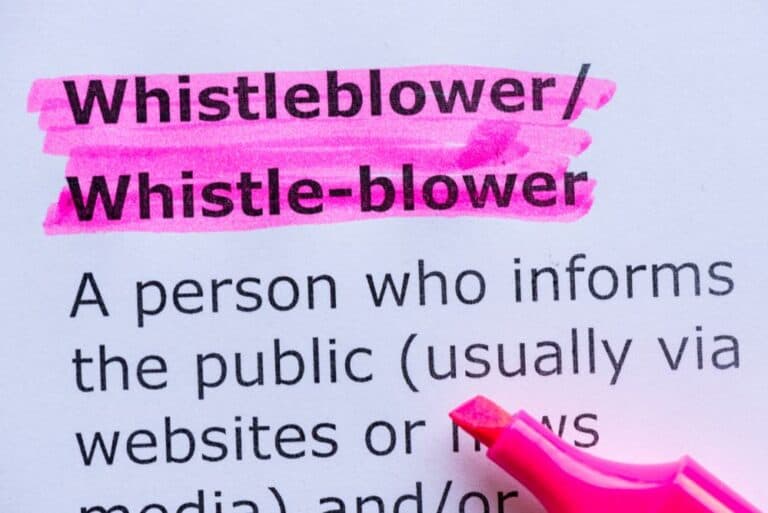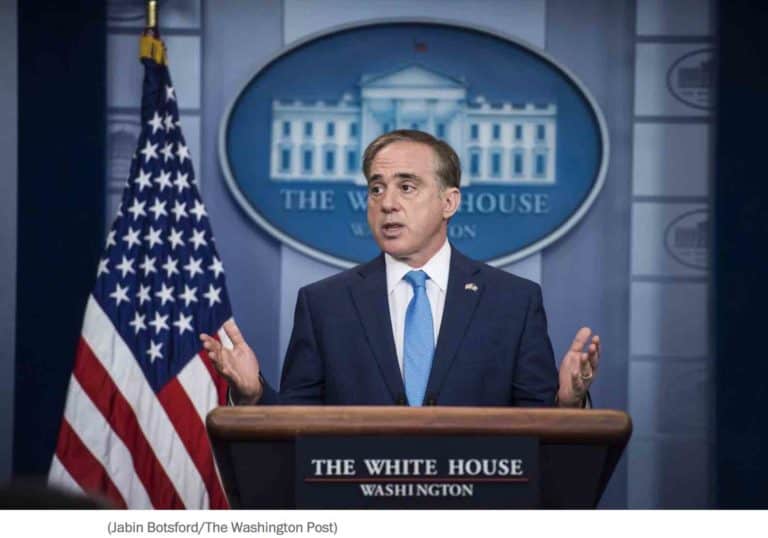Text Stress and Burnout: What GAO Revealed About the VCL’s Digital Services
A June 2025 Government Accountability Office (GAO) report has uncovered serious issues at the Veterans Crisis Line (VCL), impacting the quality of care for veterans in crisis. It revealed that chat and text responders are routinely juggling multiple conversations at once — and that high-risk callers are sometimes routed to staff without proper training. These gaps put both callers and responders at risk.
What the GAO Found …
- Responder overload: Roughly 2,000 incidents were documented in which responders managed more than two simultaneous chat or text conversations — against best practice.
- Misrouted “complex” callers: Veterans with aggressive, abusive, or self-harm behaviors are being directed to mainline responders who lack specialized training — despite 84% of them having no such preparation.
- No incident disclosure system: Even when mistakes or risks occur, there is currently no formal process for informing veterans or their representatives — a transparency lapse noted by GAO.
Why This Matters for Disabled Veterans
Disabled veterans often confront layered medical and mental health struggles — from PTSD and TBI to chronic pain and toxic exposure.
When in crisis, they may turn to chat or text because calls feel too overwhelming. But if text support arrives late or via an untrained responder, that moment of vulnerability can lead to misunderstanding, dropped support, or worse.
Beyond care failure, this strains veterans’ trust in a system purporting to help — they deserve better than split attention and second-hand guidance.
Voices from Within …
Sen. Jerry Moran told the Senate Veterans Affairs Committee:
“Crisis line employees are frequently encouraged to just answer the call — prioritizing quantity over quality.”
One former VCL responder added:
“It’s not best practice to assess two people at once for suicide risk.” And yes, responders have mixed up names, details, and safety information on multiple chats — a serious risk in real time.
What VA Says It Will Fix …
In response to the GAO report, VA has committed to:
- Reducing chat and text concurrency (limiting responders to fewer simultaneous contacts)
- Expanding training, especially for the “complex needs” (CWCN) unit
- Establishing incident disclosure protocols so that critical mistakes are reported and addressed
- Finalizing formal response time goals (e.g. 95% response under 45 seconds) by fall 2025
What You Should Do
- Use voice if possible: If in crisis, a phone call is still the most direct method — dial 988 and press 1.
- Track chat/text delays: If you experience lag or dropped conversation, report it to your VA mental health provider or VSO.
- Ask about training procedures: Specialists expect CWCN-trained responders — don’t hesitate to ask if you’re classified correctly.
- Document bad experiences: If you’ve had a crisis call mishandled, report the incident and push for accountability.
Final Thoughts … A Tangled Safety Net?
The VA Crisis Line was built to be a safety net — but GAO’s report shows it’s tangled with inconsistencies and strain.
With millions of interactions logged between 2021–2024, every delay or misrouted message is another opportunity for error. GAO’s recommendations and VA’s promises are promising — but execution matters most.
When a vet reaches out, there should be one clear focus: listening with purpose, responding with care. Not juggling three texts, not redirecting trauma — withholding help when it’s needed most.



also –
about these “complex needs”
so it sounds like the VA is claiming that these “complex needs” are just way too overwhelming because they lack enough workers with the “specialized training” to handle these needs?
so i guess the needs of most veterans in crisis are very simple and easy to handle, then? no need to train most of the staff, they’ll take care of the simple veterans crises: “hi veterans crisis line”
“yeah i’m feeling hopeless and alone”
“sounds like you’re feeling hopeless & alone” *as she quietly dispatches a SWAT team to go help the living shit out of them*
there, all better. simple simple.
but then there are these very highly trained professionals with the most specialest specialized training – this training is so special that the VA can only train or hire very few of them, or maybe none. training is a scarce resource, can’t flood the market (VCL) with too many trained workers otherwise they’ll lose their value. heavens to betsy, these trained employees should be saved only for special events – like those “complex needs” callers.
those complex needs that can so conveniently be blamed for leadership’s failures – and they got smart guys like you to explain it all to us drooling head cases, “the lack of highly specialized training, it’s way too special, they can only NOT train their workers so you veterans with your nice simple easy crises can get the help you need, and it would actually be bad to train the whole staff because then it won’t be special anymore”
that’s you.
and i know you know this – that by “complex needs” they are talking about people who say swears and are rude to them.
that’s the part that makes this whole thing so utterly ridiculous. if our crises are not sweet enough, if we HAVE REASONABLE RESPONSES TO DEHUMANIZING TREATMENT, we are then “too complex” for them? and they don’t have enough staff who are “specially trained” to take calls or texts from frustrated, desperate, scared, ANGRY veterans in crisis?
i don’t know about you but i don’t need “specialized training” to access my basic humanity. i worked at the Chicago Rape Crisis Hotline for 8 years. I did have a lot of training. but that was just for procedure. the callers needed my humanity. i got yelled at, i got cursed out – but i was not the victim. i knew why they were angry. because i would be too. you act like there’s no context involved in any of this shit, as if “mental cases” are purely irrational, responding to nothing, calling the VCL to be rude because we’re just wild & crazy assholes. when you remove the context, you remove our humanity and that’s a big part of the problem. knock that shit off.
and then the final insult – your advice.
call the voice line (if possible)
of course, how thoughtless of us. the VA wants to understaff the VCL with untrained workers, and the text service is way too popular on account of the voice calls carrying the dramatically increased risk of us getting flagged as “complex” so your advice to us is to change our needs to accommodate the workers, so leadership can continue playing their stupid games.
call instead of text? oh sure sure, yeah. no problem, maybe we’ll just go ahead and not have any mental health issues at all. would that be helpful? whatever is easiest for the bureaucrats. we need to do better about offering burnout-informed crises so the bureaucrats can continue abusing their front line workers.
please kick your own ass.
thanks.
today is saturday august 30. i just came upon this article in the midst of a prolonged crisis – i literally hate the VCL because of literal violence that could result from just reaching out for help, but out of desperation and a lack of any other options, i attempted to contact the VCL by text message at 6:31 am. i got no response. it is now almost 2:30 pm. i have made several subsequent attempts, which have beennnet with complete silence.
my texts are not being “mishandled,” they are being ignored. 8 hours is not a mixup or a fumble. they are not responding at all. it’s not ok.
and you say to “report it?” my friend, what planet do you live on? first of all, i have no mental health provider – but i have in the past and if you knew wtf you were talking about, you’d understand the absurdity of your suggestion.
i’ve been documenting the living shit out of all this crap for 3 goddamn years – there is no one to give it to. no one wants it. no one cares.
i hate you for using your platform to parrot the VA instead of actually knowing wtf you’re talking about. fuck u.
So just to understand how great and wonderful the VA feels about their task of caring for the Veteran. I am in crisis which immediately indicates I could use serious help to avoid whatever. So I am now going to sit or stand and take the absurd time to type in a situation into a stupid chat box or text a idiot at the end of that line. Does anyone have a brain to actually use it to think about that event, The VA is overdue to be eliminated
At one point, in 2019, veterans in certain areas of N Florida could only see primary care once a year. They shed veterans like fleas. That one they were able to sweep under the rug. Scandals at VA pop up everywhere at different times at VA. Only the ones that make the news are the ones they are unable to sweep under the rug. It’s like whack a mole with the scandals. They admit to nothing unless mass death is involved.
Just imagine some low level schmuck at VA swinging their dick around causing people to leave and the VA keeps that asshole and never calls back the veterans again. What an abhorrent entity. It must be gotten rid of. They’ve had decades.
You see the picture for this article? That’s what needs to happen to Rhett goddamn Puder. Rhett Puder, you are a scoundrel. That red haired cunt you associated with at UGA is gonna get sued you fat, crazy fucker.
Why not just call the cops on yourself? Because that’s all they’re going to do. That and get you babysat by some asshole for about a year. Did I mention that some of them now employed to assassinate people’s character on record? That’s right. They hire people to do that instead of provide actual mental health care. Just think about all the money that goes to a bunch of sots instead of medically necessary procedures.
today is saturday august 30. i just came upon this article in the midst of a prolonged crisis – i literally hate the VCL because of literal violence that could result from just reaching out for help, but out of desperation and a lack of any other options, i attempted to contact the VCL by text message at 6:31 am. i got no response. it is now almost 2:30 pm. i have made several subsequent attempts, which have beennnet with complete silence.
my texts are not being “mishandled,” they are being ignored. 8 hours is not a mixup or a fumble. they are not responding at all. it’s not ok.
and you say to “report it?” my friend, what planet do you live on? first of all, i have no mental health provider – but i have in the past and if you knew wtf you were talking about, you’d understand the absurdity of your suggestion.
i’ve been documenting the living shit out of all this crap for 3 goddamn years – there is no one to give it to. no one wants it. no one cares.
i hate you for using your platform to parrot the VA instead of actually knowing wtf you’re talking about. fuck u.
VA is constantly fucked up and it’s probably also a huge pain in the ass to work there. They could also be given trillions and they’d deny care for medically necessary procedures..so perhaps instead of paying 400K people to fuck it all up…use that money for medically necessary procedures instead.